Striking Shots: Winning Photos Reveal Amazing Life Underwater
Blue Lasso
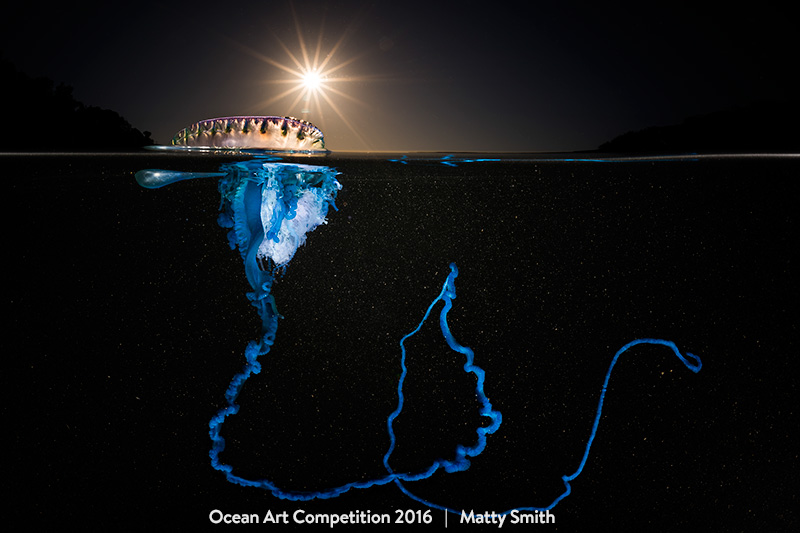
A Pacific Man-of-War (Physalia utriciulus) floats in the darkness in Bushrangers Bay, New South Wales, Australia. This dramatic shot was captured by photographer Matty Smith and won Best of Show in Underwater Photography Guide's 2016 Ocean Art Contest. Pacific Man-of-Wars are siphonophores, organisms made up of multiple polyps working together as one unit.
[Read more about the ocean photography winners]
Tentacle Tornado
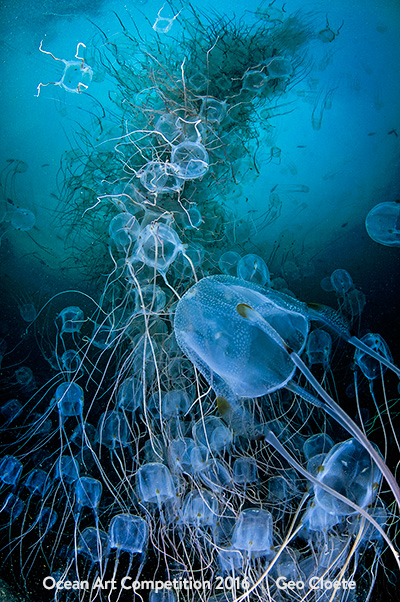
A train of box jellyfish (Carybdea branchi) aggregate on the Atlantic seaboard off Cape Town, South Africa. Little is known about what jellyfish form these columns, according to photographer Geo Cloete, who took the top prize in the Ocean Art competition's Marine Life Behavior category for this unworldly shot.
The World of a Pike
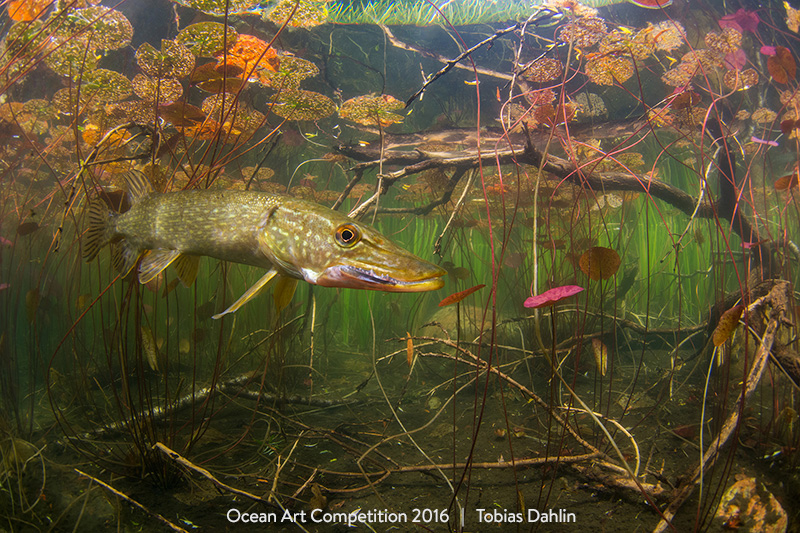
A lopsided grin from a shy pike took first place in the Ocean Art competition's Cold Water category. This colorful scene was captured by photographer Tobias Dahlin in a lake called Skällinge in southwestern Sweden.
Bait Ball Cocoon
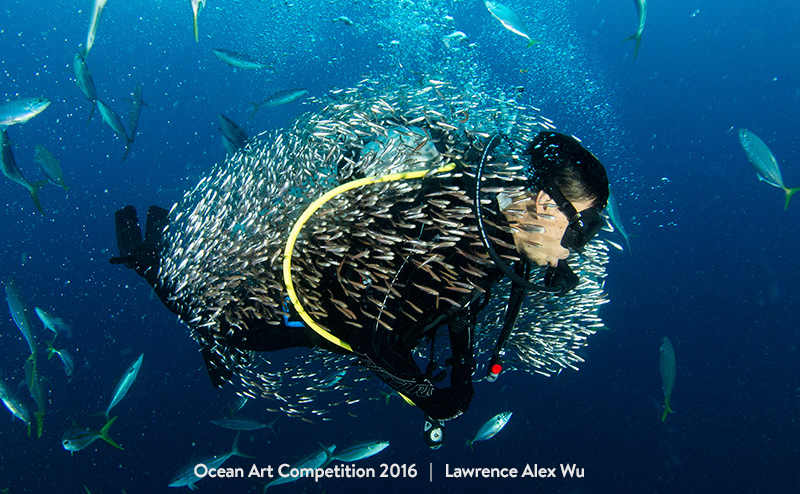
A school of glass fish swirls around a diver in Hin Deang, Thailand in the winning photograph in the compact behavior category of the 2016 Ocean Art Competition. According to photographer Lawrence Alex Wu, the fish were in a panic, attempting to escape a school of larger predatory fish.
[Read more about the ocean photography winners]
Our Enchanted Forest
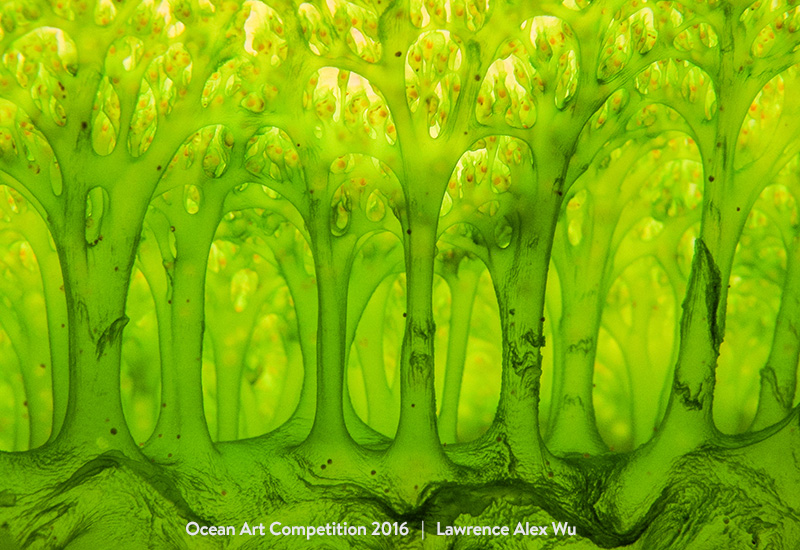
Tiny trees? No, this is a shot of the inside of a common sea squirt. It's also the winner in the compact macro category of the 2016 Ocean Art Competition by Underwater Photography Guide. Photographer Lawrence Alex Wu took this photo in Anilao in the Phillippines. Each tree-like structure is about 0.7 inches (2 centimeters) tall.
Sign up for the Live Science daily newsletter now
Get the world’s most fascinating discoveries delivered straight to your inbox.
Photographic Chaos
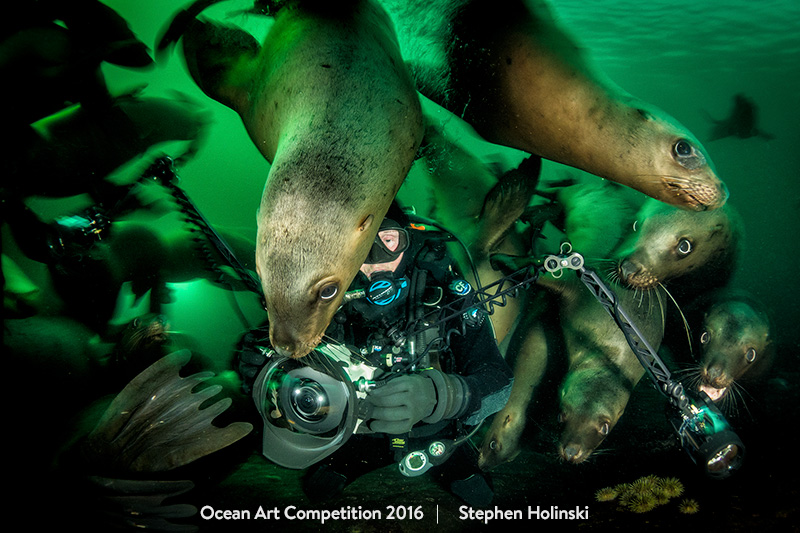
What do you do when your photographic subjects aren't cooperating? Turn the experience into a prize-winning photograph, of course. This shot of curious Steller sea lions (Eumetopias jubatus) won the compact wide-angle category of the 2016 Ocean Art Competition. Photographer Stephen Holinski captured the "photographic madness" of diving with sea lions, as he put it, off the coast of Hornby Island in British Columbia.
Predatory and Prey
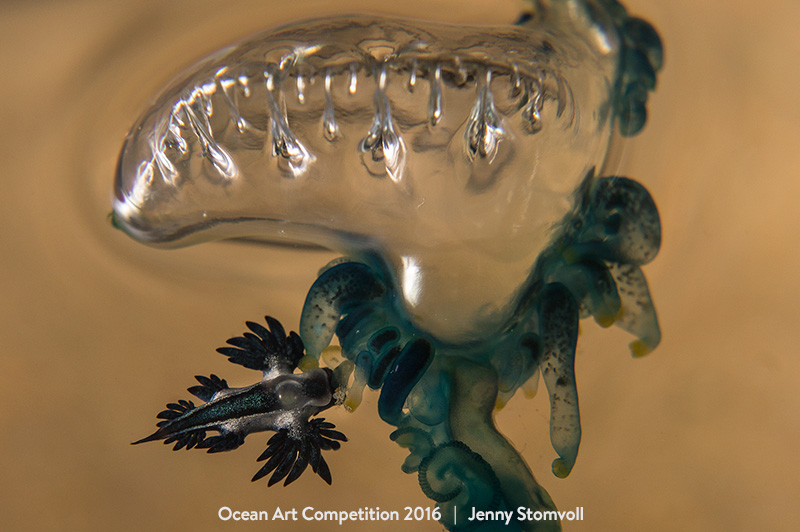
A tiny sea swallow feeds on the tentacles of a Man-of-War in the shallows of Ponta Bay, Ponta do Ouro, Mozambique. Strong northeast winds push Man-of-Wars, or bluebottles, into the bay, leading to many strandings, according to photographer Jenny Stromvoll. Stromvoll took first place in the mirrorless photography behavior category of the 2016 Ocean Art Competition for this shot.
[Read more about the ocean photography winners]
First Blue Ring
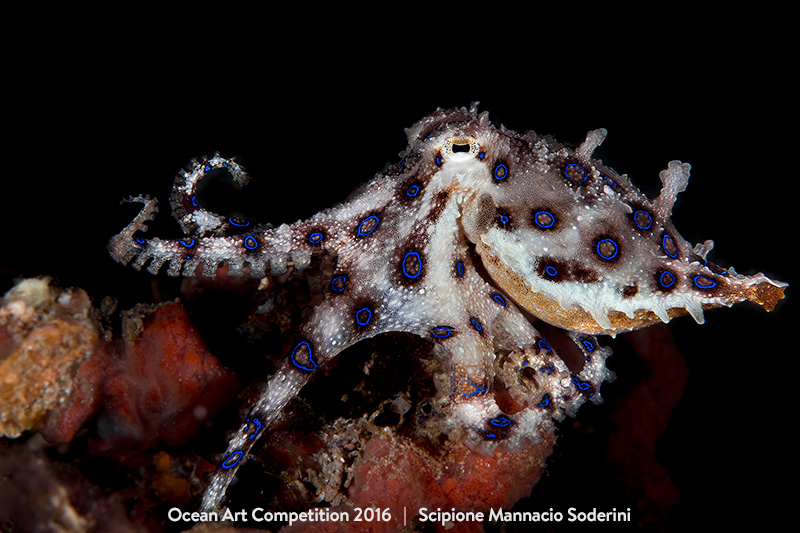
Scipione Mannacio Soderini had never seen a blue ring octopus in the wild before the day that he took this shot, which won first prize in the mirrorless macro category of the 2016 Ocean Art Competition. Blue ring octopuses are venomous, and their bites can even be fatal to humans, but Soderini said that this specimen, found in Puerto Galera, Mindoro in the Philippines, was calm and curious.
Atlantic Spotted Dolphin

A spotted Atlantic dolphin swims playfully in Bimini, Bahamas. Photographer Eugene Kitsios won the mirrorless wide-angle category in the 2016 Ocean Art Competition for this shot of the smiling marine mammal.
Under My Umbrella
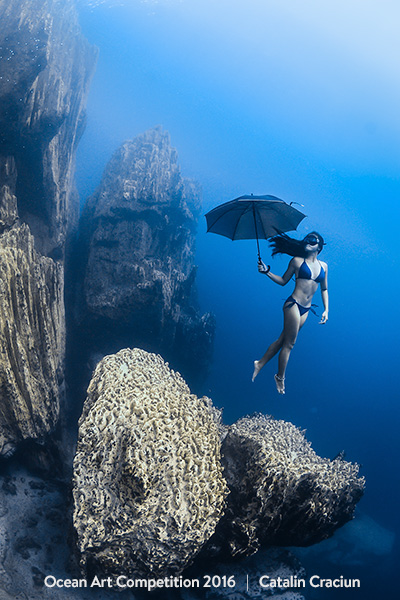
Mary Jane Paula, a free-diving instructor and the deepest Filipina freediver, poses in this whimsical shot by Catalin Cracium. The photo won the novice DSLR category in the 2016 Ocean Art Competition. It was taken in Barrcuda Lake, Coron, Palawan, Philippines. Cracium and Paula are about 30 feet (9 meters) deep.
Nudibranch Love
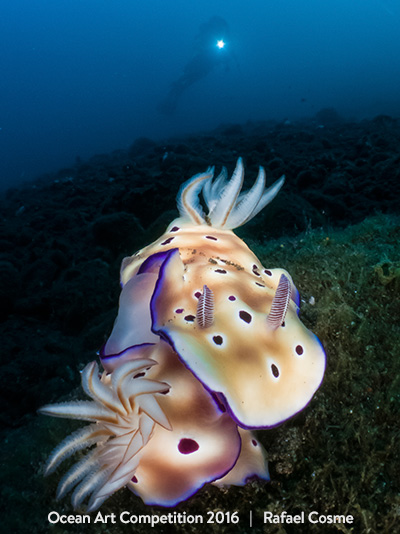
Ah, nudibranch love. Two marine mollusks mate in this award-winning shot by photographer Rafael Cosme, taken in Tulamben, Indonesia. The figure in the background is the photographer's wife. The shot took first place in the nudibranch category of the 2016 Ocean Art Competition.

Stephanie Pappas is a contributing writer for Live Science, covering topics ranging from geoscience to archaeology to the human brain and behavior. She was previously a senior writer for Live Science but is now a freelancer based in Denver, Colorado, and regularly contributes to Scientific American and The Monitor, the monthly magazine of the American Psychological Association. Stephanie received a bachelor's degree in psychology from the University of South Carolina and a graduate certificate in science communication from the University of California, Santa Cruz.









